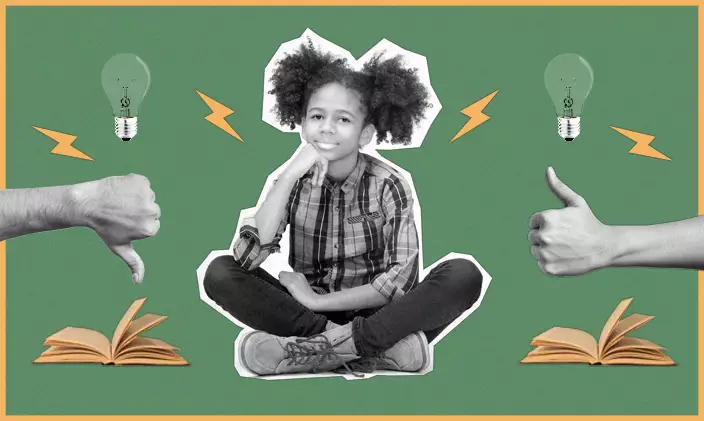What is behaviorism learning theory?
This article was updated on April 19, 2024.

Written by Michael Feder

Reviewed by Christina Neider, EdD, Associate Provost of Colleges

Have you ever wondered why someone reacts or behaves in a specific way? Then you may want to tap into behaviorism learning theory.
Psychology helps us understand how people act, especially when confronted with situations that challenge them. Within education, professionals typically subscribe to one or more theories of learning. These theories and philosophies can dictate everything from teaching styles to classroom management.
The basic definition of behaviorism learning theory
One of the learning theories, behaviorism learning theory is an approach to shaping human behavior. It emphasizes observable behaviors over internal mental processes. These observable behaviors can range from exam performance to tardiness in the classroom.
In short, behaviorism emphasizes how people interact with their environment. Over time, these interactions (called stimuli) form particular behaviors. The process by which a behavior is formed is known as conditioning.
In general, behaviorists are typically concerned solely or primarily with understanding behavior as the response to environmental stimuli. They’re generally unconcerned with psychological phenomena that cannot be systematically observed.
As we will see, some behaviorists are more extreme in this way of thinking than others. On one end of the spectrum, radical behaviorists entirely discount innate psychological phenomena outside of stimulus and response. For radical behaviorists, in other words, everything that makes up a person’s psychology, personality and knowledge is a result of interactions with their environment.
The history of behaviorism learning theory
Behaviorism as a learning theory represents the culmination of various schools of thought in modern psychology. Some of the people and concepts that formed behaviorism as a learning theory include:
- Wilhelm Wundt
- Ivan Pavlov
- John Watson
- B.F. Skinner
Wilhelm Wundt
Wilhelm Wundt, widely regarded as the “father of experimental psychology,” founded the first psychology laboratory in the world and carried out experiments that strongly influenced the field. His novel, 19th-century approach included the proposal that psychology is a natural science; he facilitated controlled experiments with reproducible results. This work primarily focused on objective measurement of qualities such as reaction times and attention spans.
Wundt’s contributions to the field are often considered significant, and the emphasis on external study greatly influenced later behaviorists.
Ivan Pavlov
One of those behaviorists, Ivan Pavlov, is most known for his study of dogs who salivated as specific lab assistants entered the room. Because these lab assistants often fed the dogs, Pavlov noticed that the dogs associated the presence of the assistants with food, triggering a physiological response. He devised an experiment to tie the presence of food with the ringing of a bell. The dogs began to associate the bell’s ringing with the arrival of food.
These experiments helped formalize the concept of classical conditioning. According to this theory, a neutral stimulus can elicit a response when paired with a positive stimulus. In this example, the bell (a neutral stimulus) becomes associated with the positive stimulus (food) to produce the same behavior (salivation).
John Watson
Even though Pavlov confined his experiments to animals, another psychologist — John Watson — performed experiments on people (with dubious ethical considerations). While he is widely regarded as the founder of behavioral psychology, Watson never claimed this title. He did believe that scientists could study behavior in an experimental setting, which led to one of the most infamous tests: the Little Albert experiment.
In his research, Watson conditioned a young child to fear a small rat by timing the arrival of the rat with a loud noise. Though many today consider this ethically inexcusable, Watson’s experiment had important implications, including that many of Pavlov’s findings also applied to human behavior.
This connection between external stimuli and developed behaviors is the bedrock upon which future innovators in behaviorism learning theory would build.
B.F. Skinner
Many of behaviorism’s commonplace concepts, such as positive and negative reinforcement and operant conditioning, grew out of B.F. Skinner’s groundbreaking work.
Skinner’s landmark experiment involved placing a lab rat in an operant conditioning chamber or “Skinner box,” outfitted with a lever or button. The animal could press the lever or button to receive food.
In other versions of the experiment, the animal would receive a small shock if it pressed the lever outside of set conditions, such as a light being on or off.
These two responses, food and shock, are known as reinforcements and punishments, respectively. Skinner found that animals were prone to push the lever when they received rewards and less likely to do so when they didn’t. He called this operant conditioning. Contrasting this with Pavlov’s conclusions, where behavior depends on the preceding stimulus, Skinner argued that the subject’s behavior depends on the stimulus that follows it.
In operant conditioning, subjects receive positive and negative reinforcement and punishment:
- Positive reinforcement: Good behavior receives a reinforcement, such as a prize or gold star.
- Negative reinforcement: Good behavior ends with something negative, such as cleanup duty or assignments.
- Positive punishment: Bad behavior receives a new, unpleasant stimulus such as extra homework.
- Negative punishment: Bad behavior earns subtractive measures, such as recess time being taken away.
Skinner would go on to propose radical behaviorism, in which all psychological processes were deemed responses to environmental stimuli and reinforcement. Though many contemporary behaviorists aren’t as extreme in their views, Skinner’s work contributes heavily to modern behaviorist learning theory.
How to apply behaviorism learning theory in the classroom
Though teachers are often familiar with several learning theories and may use a combination of them in class, some concepts can find their roots in behaviorism, including:
Student feedback
If a teacher returns students’ papers within a week of submission, students may be more likely to learn from that feedback, compared to a teacher who waits several weeks. This is because a quick turnaround creates a stronger relationship between the behavior (writing the paper) and the reinforcement (receiving feedback).
Reward systems
Many teachers implement reward systems for students to reinforce good behavior. When students receive extra credit for optional quizzes leading up to a big test, for instance, they might be more likely to pace their study with the quizzes, instead of cramming the night before the exam. Of course, reward systems have to be assessed and reassessed to make sure they’re reinforcing the right behaviors and not opening the door to cheating or manipulation.
Shaping
Similar to reward systems, shaping is a behavioralist technique in which teachers gradually reinforce behaviors that approximate the desired outcome. For example, a teacher might first praise students for arriving to class on time, then only offer praise when the same students bring necessary materials, and so on until desired behaviors are achieved.
Start of class
Instead of jumping into lessons immediately, many teachers opt to start their classes with routine activities. This can be as simple as leaving a problem up on the board for students to complete as the class begins. Such behaviors create consistency, which can help students remain focused while easing into a learning environment.
Modeling
Teachers can display the behaviors they want students to adopt, showing rather than telling students how to behave. Students often imitate the behaviors they observe, especially those displayed by authority figures like teachers.
The theory of behaviorism has a long and rich history, one that affects how students learn in classrooms every day. From Wundt to Skinner, past innovators have shaped our understanding of how knowledge is acquired. Perhaps more importantly, today’s innovators, psychologists and educators will likely build on these ideas well into the future.
Applying behaviorism learning theory in education
Knowing how to appropriately apply behaviorism learning theory and other models of psychology is an important part of advocating for learning and applying critical thinking and innovative skills.
At University of Phoenix, graduate education programs can help you develop the skills you need to innovate in curriculum and instruction in lessons and maintain educational standards.
- Master of Arts in Education/Curriculum and Instruction: This master's in curriculum and instruction is designed for teachers (P-12) who want to serve as leaders in their schools with advanced knowledge and skills in curriculum and instruction.
- Post-Master's Certificate in Curriculum and Instruction: This program equips you with skills to lead the creation of educational coursework, instructional techniques and student assessments.
Curious to learn more about online education programs at UOPX? Find more information on the UOPX website!

ABOUT THE AUTHOR
A graduate of Johns Hopkins University and its Writing Seminars program and winner of the Stephen A. Dixon Literary Prize, Michael Feder brings an eye for detail and a passion for research to every article he writes. His academic and professional background includes experience in marketing, content development, script writing and SEO. Today, he works as a multimedia specialist at University of Phoenix where he covers a variety of topics ranging from healthcare to IT.

ABOUT THE REVIEWER
Christina Neider is the associate provost of colleges and former dean of the University of Phoenix College of Social and Behavioral Sciences. Neider’s career spans more than 30 years in academia, healthcare and the U.S. Air Force. She has held several academic leadership roles at University of Phoenix, and she is the Vice President of membership for the Arizona Chapter of the Healthcare Information and Management Systems Society.
This article has been vetted by University of Phoenix's editorial advisory committee.
Read more about our editorial process.


